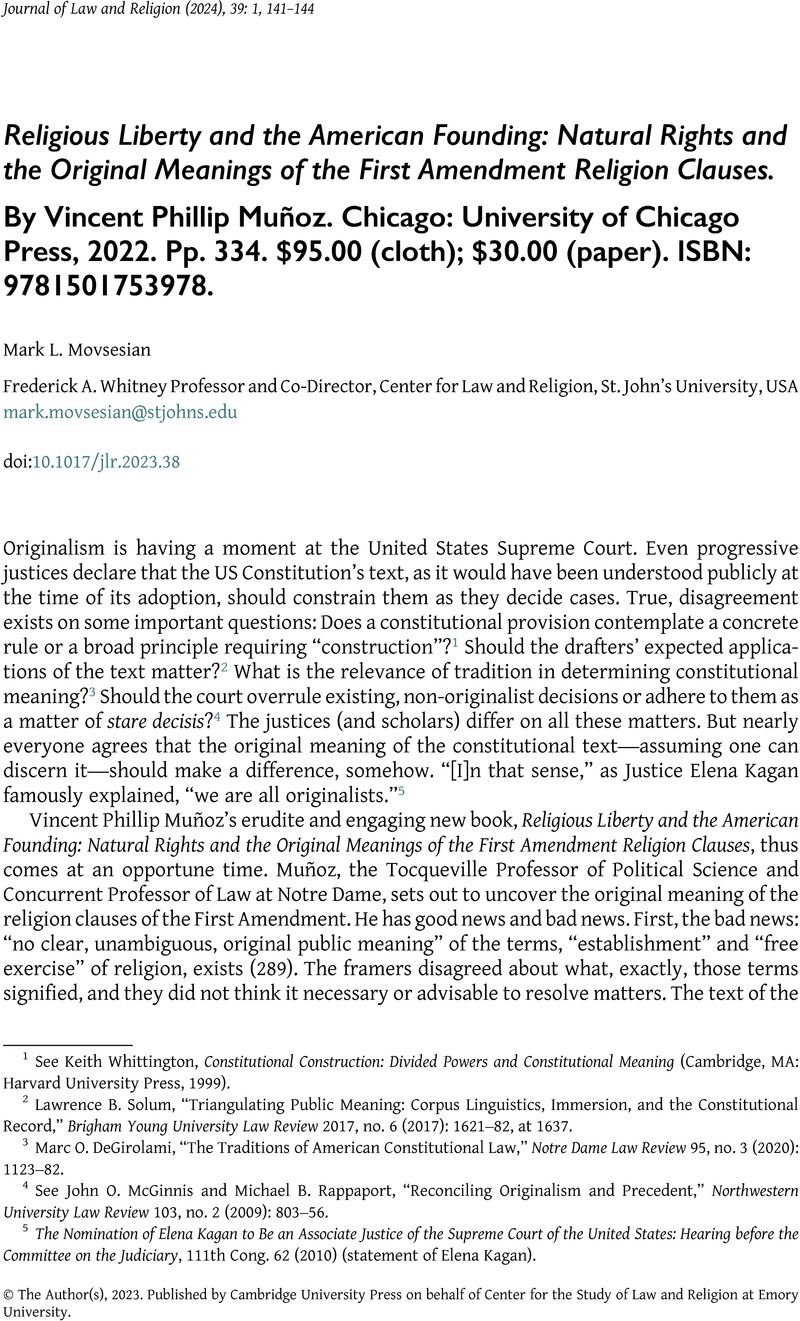No CrossRef data available.
Published online by Cambridge University Press: 06 December 2023

1 See Whittington, Keith, Constitutional Construction: Divided Powers and Constitutional Meaning (Cambridge, MA: Harvard University Press, 1999)Google Scholar.
2 Solum, Lawrence B., “Triangulating Public Meaning: Corpus Linguistics, Immersion, and the Constitutional Record,” Brigham Young University Law Review 2017, no. 6 (2017): 1621–82Google Scholar, at 1637.
3 DeGirolami, Marc O., “The Traditions of American Constitutional Law,” Notre Dame Law Review 95, no. 3 (2020): 1123–82Google Scholar.
4 See McGinnis, John O. and Rappaport, Michael B., “Reconciling Originalism and Precedent,” Northwestern University Law Review 103, no. 2 (2009): 803–56Google Scholar.
5 The Nomination of Elena Kagan to Be an Associate Justice of the Supreme Court of the United States: Hearing before the Committee on the Judiciary, 111th Cong. 62 (2010) (statement of Elena Kagan).
6 This phrase is typically attributed to Dutch historian Pieter Geyl. See Larsen, Allison Orr, “Factual Precedents,” University of Pennsylvania Law Review 162, no. 1 (2013): 59–116 Google Scholar, at 106n264.
7 For the classic treatment, see Fuller, Lon L., “The Case of the Speluncean Explorers,” Harvard Law Review 62, no. 4 (1949): 616–45CrossRefGoogle Scholar.
8 572 U.S. 565 (2014).